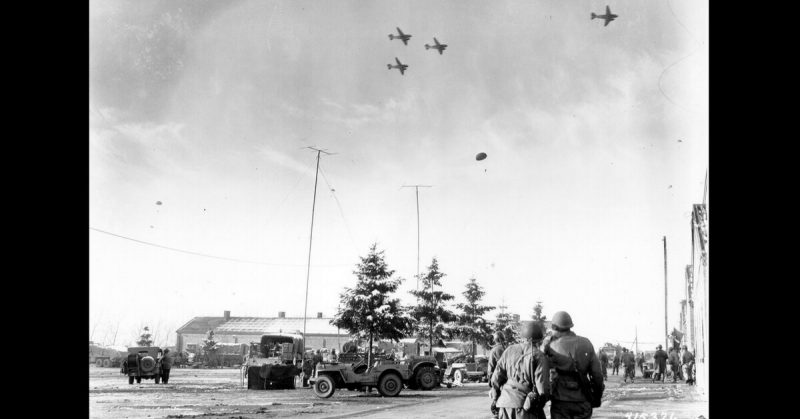On December 22, 1944, the Germans had the US 101st Airborne Division trapped in the Belgian city of Bastogne. Feeling generous, German General Walther Freiherr von Lüttwitz offered the Americans his terms of surrender. They gave their (in)famous reply. Given that the 101st called themselves the “Battered Bastards,” it was quite a tame response.
Six days before, Germany had launched the Ardennes Offensive with 13 Divisions. They had hoped to take the Ardennes forest in Belgium and France to stop the Allies in the west so they could focus on the Russians to the east. It was very successful, and the Allied front began to crumble.
The 101st held their ground at Bastogne, while the 501st Parachute Infantry launched a diversionary attack east. It worked, forcing the Germans to hold defensive positions outside the town. By December 20, they had Bastogne surrounded and had managed to enter several times before being driven back out.
On December 22, they told the Americans to surrender, or they would give them everything they had.
US Brigadier General Anthony McAuliffe’s famous reply was:
To the German Commander
NUTS!
The American Commander
Von Lüttwitz got the idea. True to his word, he gave them everything he had. Some 6,000 Allies were captured outside Bastogne, while inside the city, supplies began to dwindle.
The 333rd Field Artillery Battalion (the Black Battalion) retreated into Bastogne and were given carbines for the city’s defense; despite the rampant racism which prevented black people from serving on the front lines. Although provided with only ten artillery rounds per day, they held their sector and were awarded the Presidential Unit Citation.
Events changed on December 24 when the Allies dropped supplies into the city. Two days later, the US 4th Armored Division broke through German lines to reinforce Bastogne. Later that day, more air drops included medical personnel and other supplies for the wounded, allowing the Allies to go on the offensive.
For the next three weeks, they drove the Germans back, forcing them out of Belgium by January 18, 1945.
